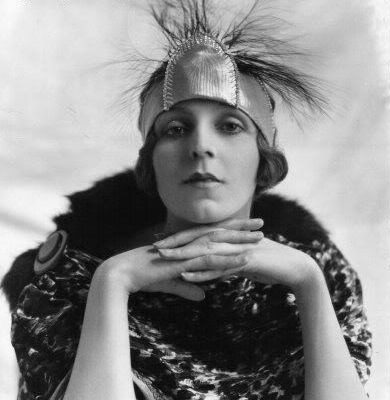If you’re a fashion designer or fashion entrepreneur, you possess great aesthetic intuition, are highly creative, and know exactly where you are going with your design vision. And you’ve probably out of necessity filled many roles along your entrepreneurial journey, adding to your skill set and the tools in your fashion business toolbox.
At some point, it’s likely you’ll have to add business-plan creator to your list of accomplishments. If you want to grow and expand your business, or if you’re seeking funding such as a business line of credit or business loan – as many fashion brands must early on – then a business plan is an absolute must-have.

Some of my fashion industry clients have approached the business plan as a dreaded and overwhelming challenge. Take heart; while it’s definitely something we at Moda Metiers can assist with, it’s also something you can do on your own, and it’s not as intimidating as it might sound. A business plan is simply a written document that outlines key information about your business: ownership, leadership, goals and your plans and strategies to achieve them, market insights, some financial details, and a projected time frame to accomplish your goals.
If you want to get ahead of the game and accelerate your vision for success, start preparing a business plan for your fashion brand sooner rather than later. Here are five essential components of a business plan to start you on your way:
1. An executive summary. This is a concise statement that describes your company and its goals, your products, sales, and profit opportunities. You should include your credentials and any particular background you have in fashion and related areas. This short statement will likely be the first thing banks or potential investors examine.
Because the executive summary is really a précis of all the information contained in your business plan, you may want to prepare it in a rough draft form first, and then revise and finalize it once you’ve created the rest of your business plan.
2. Market research. Even if you’re just starting out, it’s probable that you have some market research. If you haven’t, you’ll need to conduct surveys and interviews to learn about your customer, the trends that matter to them, what influences their purchase decisions, where they look to make their purchases, etc.
When you’re defining your customer, you want to be as specific as possible; avoid a broad and generic approach in an effort to capture everyone. Efforts to appeal to everyone are usually less successful – you often end up appealing to no one.
Remember that fashion is a very competitive sector, so distinguishing your market is a key metric of your ability to identify opportunities for your brand. Be clear as to whether your product is new or targets a specific niche or customer type.
Include information about how your brand fits into a global marketplace.
If you are seeking investment, you will need to include a marketing plan to guide your potential investors and help them understand the ways you intend to engage with your market.
3. Marketing strategy. Your marketing strategy is guided by your market research, so tailor your strategy to your intended customer. List your marketing goals and project costs in detail for the first year of your business, and then estimate up to five years into the future as well.
You will build your social media strategy later.
4. Organizational overview. Prepare an organizational chart. Provide details of your business’s organizational structure. This should include the owner(s) and directors, any managers and other employees, plus anyone you may need to employ on an occasional or contract basis.
Estimate the costs of recruiting, hiring, and retaining the major personnel you’ll need, and try to project what might change if your business expands or if you need to contract.
Remember that, depending on your business, you may have to employ models, photographers, seamstresses, and so on. Keep in mind that you may also want to consult with experts as you’re starting out, so factor in the costs of outside consultants and expertise.
Your business plan should realistically reflect the costs of hiring a range of personnel according to your needs.
5. Detailed cost analysis. This should include the funds needed to start your business, including, for example, renting premises, purchasing supplies and equipment during the start-up phase, and the costs associated with keeping the business running, sourcing materials, fulfilling orders, and the like. Include everything you can possibly think of. While regular employee salaries are obvious, you might need to think about occasional employees during busy seasons, what type of specialists you might need to hire, how often, and how much this will cost. Remember that the cost of models can vary enormously depending on their experience, reputation, and how long they are needed for a particular job.
This section should also include key financial details such as debt owning, sources of funding, and your projected revenue, expenses, and income over at least the next couple of years.
A well-formulated plan will help you feel more confident as you move forward with your business. And it will also help you gain the confidence of potential investors, lenders, and other stakeholders. It shows the seriousness of your intent, and that you have the skills, knowledge, and a decisive plan for achieving your goals. Contact us at Moda Métiers if you’d like help speeding the process forward.





